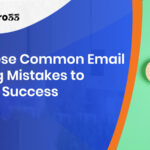- December 12, 2024
- by flashgro.ajnvgmedia.com
- Marketing
- 0 Comments
Email marketing remains a powerful tool for businesses to communicate with customers, generate leads, and build lasting relationships. However, creating an effective email campaign that resonates with your audience and drives your marketing goals requires more than sending messages to inboxes. A well-planned, thoughtful approach is essential to ensure your campaigns are impactful. Here’s a detailed step-by-step guide to help you craft successful email campaigns that engage, convert, and deliver results.
Step 1: Define Your Goals
Before you send out any emails, it’s essential to have a clear understanding of what you want to achieve. Defining your goals not only helps in shaping your campaign but also in measuring its success. Take the time to answer these questions:
- What do you want to achieve? – Are you aiming to increase sales, drive traffic to your website, promote a new product, or build brand awareness?
- How will you measure success? – Will you focus on metrics like open rates, click-through rates, conversion rates, or overall sales?
By setting clear, measurable objectives from the start, you create a roadmap for your email marketing strategy and can assess its effectiveness as the campaign unfolds.
Step 2: Understand Your Audience
Knowing your audience is the foundation of any successful email campaign. If you don’t understand your recipients’ preferences and behavior, your emails will unlikely resonate with them. Gather as much data as possible on your target audience:
- Demographics: Age, gender, location, and other basic information help you understand who your audience is.
- Interests and preferences: What are your audience’s interests? What do they engage with most?
- Email behavior: When do they open their emails? Are they more likely to click on certain content?
By utilizing this data, you can tailor your email content to meet your subscribers’ specific needs and interests, increasing engagement rates and the likelihood of conversion.
Step 3: Build Your Email List
The success of your email campaign largely depends on the quality of your email list. Focusing on organic list-building methods is key to ensuring that you’re reaching the right people. Consider these strategies:
- Offer incentives: Offer subscribers incentives for signing up, such as discounts, free trials, or access to exclusive content.
- Utilize sign-up forms: Include them on your website and social media channels to make it easy for people to join your list.
- Host events and webinars: Encourage event participants to opt-in for future email updates, ensuring the content is relevant to their interests.
A high-quality list of engaged subscribers ensures better open and click-through rates and higher conversion rates.
Step 4: Segment Your Audience
Segmentation allows you to send tailored messages to different groups within your audience, which can significantly improve engagement. Common segmentation strategies include:
- Geography: Tailor your campaigns based on location, offering localized promotions or events.
- Purchase history: Send targeted offers to customers based on their past purchases.
- Engagement level: Send different content to active subscribers versus inactive ones.
- Customer lifecycle stage: Treat new subscribers differently from long-term customers, offering onboarding emails versus loyalty rewards.
By segmenting your audience effectively, you can deliver content that resonates with specific groups, boosting open and click-through rates.
Step 5: Choose the Right Email Marketing Platform
Choosing the right email marketing tool is critical to streamlining your campaigns and achieving your goals. Look for platforms that offer features such as:
- User-friendly interface: The platform should be easy to use, even for beginners, with drag-and-drop functionality and pre-designed templates.
- Automation capabilities: Automation tools enable you to send personalized emails based on triggers, such as new sign-ups or cart abandonments.
- Analytics and reporting: Comprehensive reporting tools allow you to track key metrics like open rates, click-through rates, and conversions.
- Integration with other platforms: Your email tool should integrate seamlessly with your CRM, eCommerce platform, and other marketing tools.
Step 6: Create Compelling Content
Your email content needs to grab your audience’s attention and drive action. Key elements of compelling content include:
- Subject Line: The subject line is the first thing your recipients see, so make it catchy and relevant to encourage opens.
- Body Content: The body of your email should provide value to your audience. Make sure it’s clear, concise, and aligned with your goals.
- Call-to-Action (CTA): Every email should have a clear CTA, directing recipients on what to do next, whether it’s to shop, read more, or sign up for a webinar.
Crafting high-quality, relevant content increases the chances that recipients will engage with your email.
Step 7: Design Your Email
The design of your email plays a crucial role in its effectiveness. Ensure your email looks professional and is easy to read by following these design tips:
- Responsive design: Your email should look good on all mobile devices. Over half of emails are opened on mobile devices, so optimize your design for small screens.
- Simple layout: Keep your layout clean and uncluttered, ensuring your message is easy to digest.
- Visual elements: Use images and graphics to support your message, but don’t overdo it. Keep visuals relevant to your content, and avoid making them too dominant.
A visually appealing design enhances readability and user experience, which can lead to higher engagement.
Step 8: Test Your Emails
Before sending out your email campaign, test it thoroughly. Conduct A/B testing to compare different versions of your emails and see which performs best. Test variables like:
- Subject lines: Which subject line gets more opens?
- Content format: Does a short, snappy message outperform a longer one?
- Sending time: When is your audience most likely to engage?
Testing gives valuable insights into what works and doesn’t, helping you optimize future campaigns.
Step 9: Monitor Performance Metrics
After launching your campaign, track key performance indicators (KPIs) to evaluate its success. Key metrics include:
- Open rates: How many recipients opened your email?
- Click-through rates: How many clicked-on links are within the email?
- Conversion rates: How many took the desired action, such as purchasing?
- Unsubscribe rates: How many unsubscribed from your email list?
Tracking these metrics helps you identify what worked well and what needs improvement.
Step 10: Optimize for Future Campaigns
Finally, use the insights gathered from your performance metrics to optimize future campaigns. Based on subscriber feedback and engagement patterns, refine your email content, design, and targeting strategies to improve your results continually.
Conclusion
Effective email campaigns take time, strategy, and a clear understanding of your audience. Following this step-by-step guide, you can create targeted campaigns that engage subscribers, drive conversions, and help you achieve your business goals. Remember, email marketing is a continuous process of testing, learning, and optimizing, so stay proactive and adapt to changing trends to maintain success in your campaigns.
Looking for a powerful, user-friendly platform to elevate your email marketing efforts? FlashGro33 has everything you need to create, automate, and analyze campaigns that deliver results. With advanced segmentation, robust analytics, and seamless integration options, FlashGro33 makes email marketing smarter and simpler.
Try FlashGro33 today and watch your campaigns thrive!



